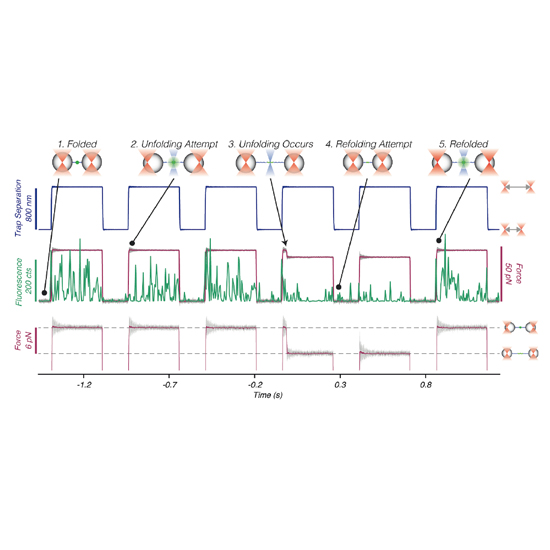Mechanically switching single-molecule fluorescence of GFP by unfolding and refolding
03-Oct-2017
PNAS, October 3, 2017. 201704937, https://doi.org/10.1073/pnas.1704937114
PNAS, online article
Green fluorescent protein (GFP) variants are widely used as genetically encoded fluorescent fusion tags, and there is an increasing interest in engineering their structure to develop in vivo optical sensors, such as for optogenetics and force transduction. Ensemble experiments have shown that the fluorescence of GFP is quenched upon denaturation. Here we study the dependence of fluorescence on protein structure by driving single molecules of GFP into different conformational states with optical tweezers and simultaneously probing the chromophore with fluorescence. Our results show that fluorescence is lost during the earliest events in unfolding, 3.5 ms before secondary structure is disrupted. No fluorescence is observed from the unfolding intermediates or the ensemble of compact and extended states populated during refolding. We further demonstrate that GFP can be mechanically switched between emissive and dark states. These data definitively establish that complete structural integrity is necessary to observe single-molecule fluorescence of GFP.











